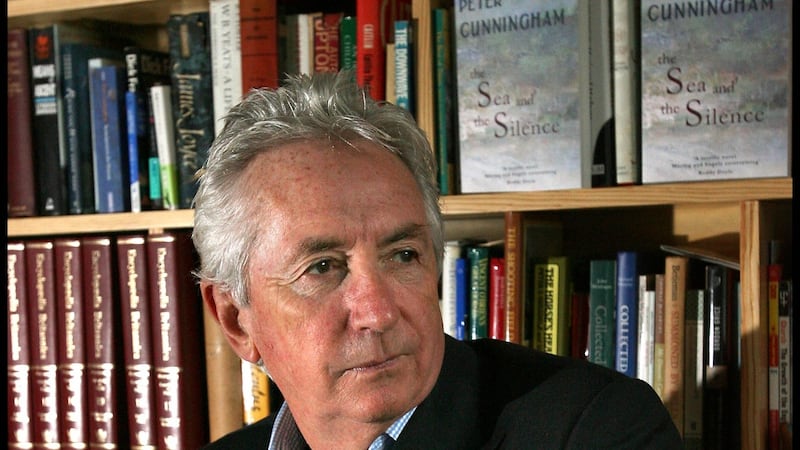When I turned 21, still a penniless student at University College Dublin, my parents took me off with them to Paris for a weekend. We stayed at the Lord Byron hotel, off the Champs Elysee. On Saturday morning we got into a taxi and headed out to the races at Saint-Cloud.
It was a glorious day. We drove through the Bois de Boulogne and arrived in Saint-Cloud racecourse where luncheon tables under large parasols were set out on the lawn. Waiters in dark jackets, wearing celluloid collars, perspired freely as they ferried trays of food from the kitchens. In the parade ring, men in bowler hats conferred gravely as the horses were led around.
As I was wondering if we were having lunch on the lawn, my father ushered my mother and I down steep steps that led underneath the grandstand. A bright sign proclaimed: “Passage Interdit!” – “No Entry!” My eyes went blind coming in from the daylight. We were in a basement service area beneath the grandstand, with boilers, cellars, stacked crates of beer and storage vaults for vegetables. Pipes ran along the ceiling inches above my head. In a corner, behind a makeshift counter, a barman in a white jacket was pouring drinks for a man and his wife.

My father had served in the British Army during the second World War and had been highly decorated, but in the early 1940s he had worked as a civilian clerk of works for the Royal Engineers in Omagh, Co Tyrone. It was in that role, he would tell me, years later, that he had been an intelligence agent for British military intelligence, keeping an eye out for them as to possible IRA activity in Omagh. In June 1943 he had left Northern Ireland and a week later was a second lieutenant with the Royal Engineers in Elgin, Scotland.
The man at the bar obviously knew my father, for he addressed him as “Major” in a gravelly Dublin accent. I was then introduced to Mr Lemass. My jaw dropped. Up to the year before, Seán Lemass had been taoiseach.
This is where these two old lads drank when they came for a day to the races at Saint-Cloud. As my mother and Mrs Lemass were being served coffee, Mr Lemass would take out his race-card, choose a horse in the next race and send me upstairs with 500 francs to bet on the Pari-Mutuel.

As a gormless 21-year-old the irony of the situation never occurred to me. But many years later, when I sat down to write my latest novel, Acts of Allegiance, I could not avoid it. Lemass, once an ardent IRA republican, had been a member of Michael Collins's Twelve Apostles gang. One morning in November 1920, they killed 14 British intelligence agents in Dublin. The whereabouts of these agents, part of the so-called Cairo Gang, had been leaked to Collins by his network of spies. Now, here in Saint-Cloud was one of the Twelve Apostles, drinking under the grandstand with a former British Army intelligence agent who had probably evaded an IRA bullet in Northern Ireland by the skin of his teeth.
Every so often that day the two old lads would erupt in laughter, and then bellow at the waiter for more drink. I wonder now what they were talking about. Perhaps it was the outrageous fortune that had transformed one from a humble draughtsman into a British officer, and the other from a quiet Dublin schoolboy into an assassin, before decades later becoming Taoiseach.
Two years later, in 1969, Lemass's son-in-law, Charles J Haughey, would help spark the fire that would engulf Northern Ireland for nearly 30 years. And what better place in Acts of Allegiance for Haughey to light that spark than in that dingy but very private bar beneath the grandstand in the racecourse at Saint-Cloud?
Acts of Allegiance by Peter Cunningham is published by Sandstone Press


















